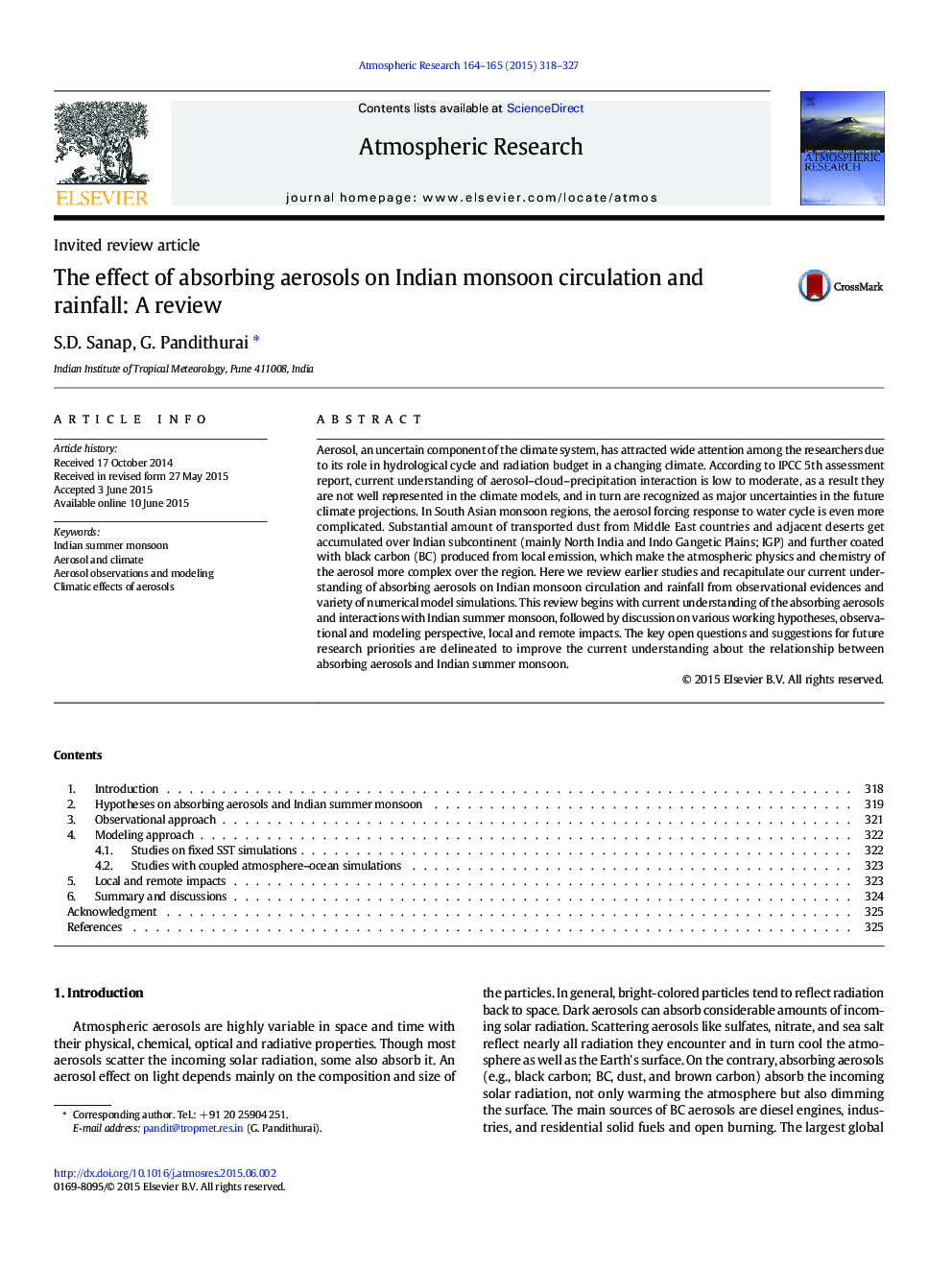| Article ID | Journal | Published Year | Pages | File Type |
|---|---|---|---|---|
| 6343242 | Atmospheric Research | 2015 | 10 Pages |
â¢Aerosol impact on Indian summer monsoon circulation and rainfallâ¢Diverse results from modeling and observationsâ¢Need for further detailed study by combining observations and modelingâ¢Requirement of more refined GCMs with appropriate representation of aerosols
Aerosol, an uncertain component of the climate system, has attracted wide attention among the researchers due to its role in hydrological cycle and radiation budget in a changing climate. According to IPCC 5th assessment report, current understanding of aerosol-cloud-precipitation interaction is low to moderate, as a result they are not well represented in the climate models, and in turn are recognized as major uncertainties in the future climate projections. In South Asian monsoon regions, the aerosol forcing response to water cycle is even more complicated. Substantial amount of transported dust from Middle East countries and adjacent deserts get accumulated over Indian subcontinent (mainly North India and Indo Gangetic Plains; IGP) and further coated with black carbon (BC) produced from local emission, which make the atmospheric physics and chemistry of the aerosol more complex over the region. Here we review earlier studies and recapitulate our current understanding of absorbing aerosols on Indian monsoon circulation and rainfall from observational evidences and variety of numerical model simulations. This review begins with current understanding of the absorbing aerosols and interactions with Indian summer monsoon, followed by discussion on various working hypotheses, observational and modeling perspective, local and remote impacts. The key open questions and suggestions for future research priorities are delineated to improve the current understanding about the relationship between absorbing aerosols and Indian summer monsoon.
